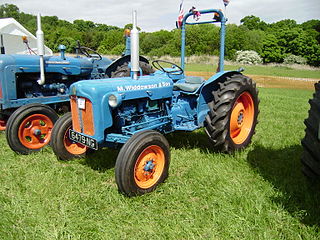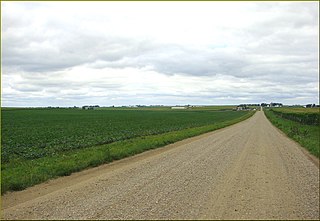 W
WAgricultural safety and health is an aspect of occupational safety and health in the agricultural workplace. It specifically addresses the health and safety of farmers, farm workers, and their families.
 W
WThe Animal Health Act 1981 is a piece of UK legislation that provides powers for the control of outbreaks of avian influenza and Newcastle disease. These powers were extended by a statutory instrument. It was amended by the Animal Health and Welfare Act 1984. It was amended in 2002 to provide more powers to deal with foot and mouth disease, a problem that in 2001 bedevilled herds during the Blair ministry.
 W
WThe Animal Health and Welfare Act 1984 was a piece of UK legislation that amended the provisions of the Animal Health Act 1981 related tothe seizure of things for the purpose of preventing the spread of disease, powers of entry upon private premises, declarations as to places infected with a disease, to enable certain orders under that Act to operate in or over territorial waters, to amend the Slaughter of Poultry Act 1967, to enable provision to be made for controlling the practice of artificial breeding of livestock, to repeal the Improvement of Live Stock Act 1931 and the Horse Breeding Act 1958, to amend the Medicines Act 1968 in relation to feeding stuffs and veterinary drugs, the registers of which are kept by the Pharmaceutical Society of Great Britain
 W
WAvian influenza, known informally as avian flu or bird flu, is a variety of influenza caused by viruses adapted to birds. The type with the greatest risk is highly pathogenic avian influenza (HPAI). Bird flu is similar to swine flu, dog flu, horse flu and human flu as an illness caused by strains of influenza viruses that have adapted to a specific host. Out of the three types of influenza viruses, influenza A virus is a zoonotic infection with a natural reservoir almost entirely in birds. Avian influenza, for most purposes, refers to the influenza A virus.
 W
WCow blowing, Kuhblasen, phooka, or doom dev, is a process used in many countries according to ethnographers, in which forceful blowing of air into a cow's vagina is applied to induce her to produce more milk.
 W
WFarmers' suicides in the United States refers to the national occurrences of farmers taking their own lives, largely since the 1980s, partly due to their falling into debt. In the Midwest alone, over 1,500 farmers have taken their own lives since the 1980s. It mirrors a crisis happening globally: in Australia, a farmer dies by suicide every four days; in the United Kingdom, one farmer a week takes their own life; and in France it is one every two days. In India more than 270,000 farmers have died by suicide since 1995.
 W
WFoot-and-mouth disease (FMD) or hoof-and-mouth disease (HMD) is an infectious and sometimes fatal viral disease that affects cloven-hoofed animals, including domestic and wild bovids. The virus causes a high fever lasting two to six days, followed by blisters inside the mouth and on the feet that may rupture and cause lameness.
 W
WGrain entrapment, or grain engulfment, occurs when a person becomes submerged in grain and cannot get out without assistance. It most frequently occurs in grain bins and other storage facilities such as silos or grain elevators, or in grain transportation vehicles, but has also been known to occur around any large quantity of grain, even freestanding piles outdoors. Usually, unstable grain collapses suddenly, wholly or partially burying workers who may be within it. Entrapment occurs when victims are partially submerged but cannot remove themselves; engulfment occurs when they are completely buried within the grain. Engulfment has a very high fatality rate.
 W
WA rollover protection structure or rollover protection system (ROPS) is a system or structure intended to protect equipment operators and motorists from injuries caused by vehicle overturns or rollovers. Like rollcages and rollbars in cars and trucks, a ROPS involves bars attached to the frame that maintain a space for the operator's body in the event of rollover.
 W
WUltra-high temperature processing (UHT), ultra-heat treatment, or ultra-pasteurization is a food processing technology that sterilizes liquid food by heating it above 135 °C (275 °F) – the temperature required to kill bacterial endospores – for 2 to 5 seconds. UHT is most commonly used in milk production, but the process is also used for fruit juices, cream, soy milk, yogurt, wine, soups, honey, and stews. UHT milk was first developed in the 1960s and became generally available for consumption in the 1970s.